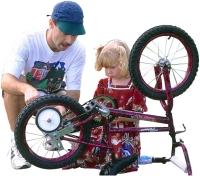 October 7th, 2012 by Robert Franklin, Esq.
October 7th, 2012 by Robert Franklin, Esq.
With the release of a new study by Dr. John M. Leventhal, Yale professor of pediatrics and nursing, and director of the Child Abuse Programs at Yale-New Haven Children’s Hospital and colleagues, the press has engaged in a minor bout of scare tactics designed to convince us that child abuse is worse than previously reported. Here’s one article (Huffington Post, 10/1/12).
Last year, the Administration for Children and Families of the U.S. Department of Health and Human Services reported that overall child abuse and neglect were down significantly – about 17% below the previous year. That seemed to be cause for rejoicing, but as usual, the news media tend to prefer bad news to good.
So when Dr. Leventhal’s study came out, several news reports quickly seized on it as proof that things on the child abuse front weren’t as good as we’d been told. Now, the Yale study may or may not do that. Dr. Leventhal analyzed the data on serious child abuse from the Kids’ Inpatient Database, a set of data from hospitals and emergency rooms around the country on a variety of medical issues related to children. One of those is serious child abuse. The study concluded that serious child abuse in the U.S. rose about 4.9% for the twelve years from 1997 – 2009.
If true, and it may well be, that conclusion should concern all of us even though children are generally safe by any definition. For example, the death rate for children under one year old from abuse and neglect is under 4 per one million children that age in the population. We can all agree that four is four too many, but generally speaking, children aren’t at serious risk.
But a couple of questions arise. In the first place, each of the cases reported to KID must also be reported to the local state child welfare agency. Doctors, nurses and other hospital personnel are mandated reporters. That means they must report any instance of suspected abuse or neglect they encounter. Those reports to CPS are in turn reported to the Administration for Children and Families and become part of the figures they publish yearly. In short, the KID figures are already part of the ACF figures. Therefore, this is nothing new.
Second, and perhaps more important, a doctor or nurse may decide, from the history and medical information available to him/her at the time, that a child has been abused. But that doesn’t mean it has been. Surely many of the cases of “severe abuse” turn out to be something else once CPS investigates. The simple fact is that, using only the medical information is not always definitive in deciding whether a child has suffered abuse. Many things can cause the symptoms presented by a child at a hospital and not all of them are abuse by care givers. As but one example, for years the diagnosis “shaken baby syndrome” was confidently made, but more recently, the accuracy of that diagnosis has been called into serious question.
So, according to the KID figures, severe child abuse has increased slightly over 12 years. But just as the ACF figures aren’t the final word on child abuse and neglect, neither are the KID’s.
Predictably, many articles on the new study attempt to set up a conflict between it and the ACF figures. There probably isn’t one, given that the KID figures come to us already buried in the ACF data, but that didn’t stop the news media from trying to make a lot out of a little.
